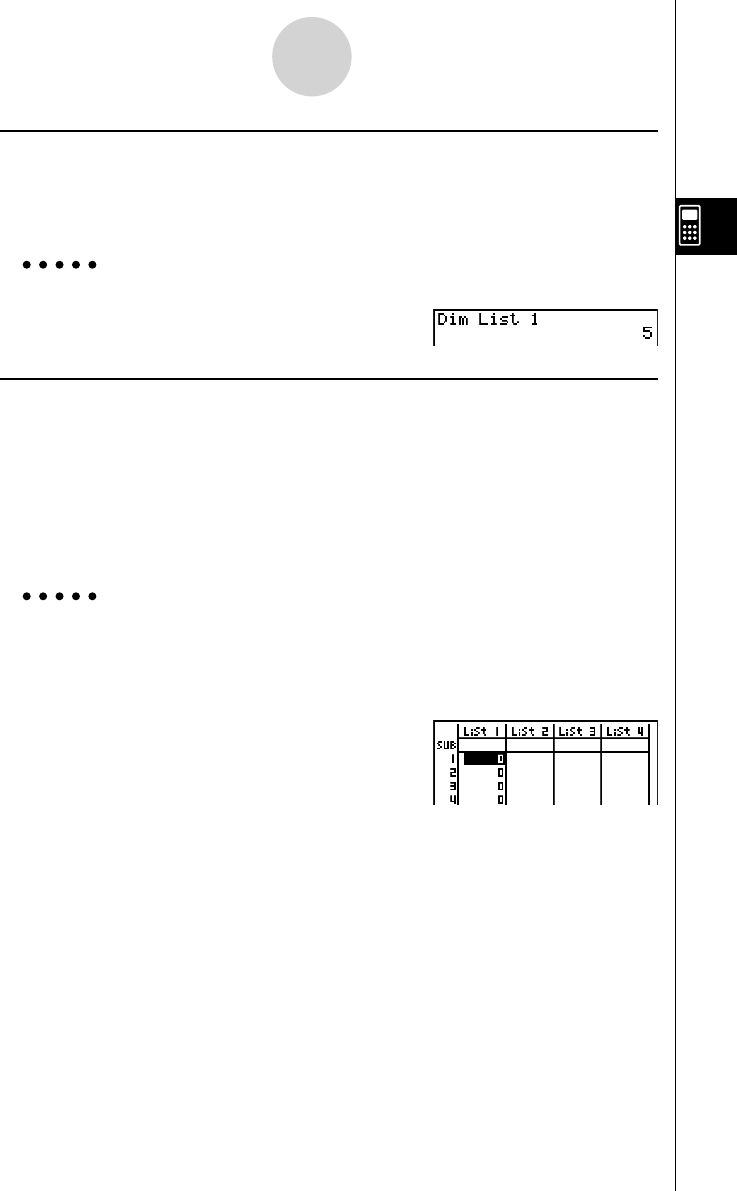User's Manual
Table Of Contents
- Quick-Start
- Precautions when Using this Product
- Contents
- Getting Acquainted— Read This First!
- Chapter 1 Basic Operation
- Chapter 2 Manual Calculations
- Chapter 3 List Function
- Chapter 4 Equation Calculations
- Chapter 5 Graphing
- 5-1 Sample Graphs
- 5-2 Controlling What Appears on a Graph Screen
- 5-3 Drawing a Graph
- 5-4 Storing a Graph in Picture Memory
- 5-5 Drawing Two Graphs on the Same Screen
- 5-6 Manual Graphing
- 5-7 Using Tables
- 5-8 Dynamic Graphing
- 5-9 Graphing a Recursion Formula
- 5-10 Changing the Appearance of a Graph
- 5-11 Function Analysis
- Chapter 6 Statistical Graphs and Calculations
- Chapter 7 Financial Calculation (TVM)
- Chapter 8 Programming
- Chapter 9 Spreadsheet
- Chapter 10 eActivity
- Chapter 11 System Settings Menu
- Chapter 12 Data Communications
- Appendix

20070201
u To count the number of data items in a list [OPTN]-[LIST]-[Dim]
K 1 (LIST)3 (Dim)1 (List) <list number 1-26> w
• The number of cells a list contains is its “dimension.”
Example To count the number of values in List 1 (36, 16, 58, 46, 56)
A K 1 (LIST)3 (Dim)
1 (List)b w
u To create a list or matrix by specifying the number of data items
[OPTN]-[LIST]-[Dim]
Use the following procedure to specify the number of data in the assignment statement
and create a list.
<number of data
n >a K 1 (LIST)3 (Dim)1 (List)
<list number 1-26>w
n = 1 - 999
Example To create fi ve data items (each of which contains 0) in List 1
A f a K 1 (LIST)3 (Dim)
1 (List) b w
You can view the newly created list by entering
the STAT mode.
Use the following procedure to specify the number of data rows and columns, and the matrix
name in the assignment statement and create a matrix.
! * ( { )<number of row
m > , <number of column n > ! / ( } )a
K 1 (LIST)3 (Dim)K 2 (MAT)1 (Mat)a <matrix name>w
m , n = 1 - 255, matrix name: A - Z
3-2-2
Manipulating List Data










